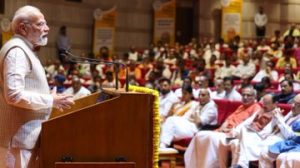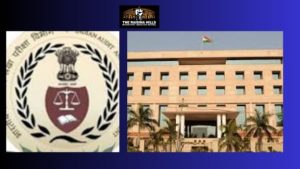Higher voter turnouts among women in Himachal, yet fewer fielded in polls

By Avni Sablok
New Delhi, October 15: While the Election Commission of India (ECI) announced the schedule for the polling to be held in Himachal Pradesh, all eyes will be on the political parties to see whether they are going to break the trend of patriarchy and increase the number of women candidates that will participate in the assembly elections. The public will be closely observing how many women candidates are fielded by the respective parties; how many of these women candidates will win the seats, as well as the factors that will be instrumental in breaking the domination of male candidates in the political arena.
Looking at the pattern of Himachal Pradesh State Assembly elections, it was only in 1967, the second state assembly elections that women contested the elections. It is pertinent to mention that of the 267 contestants at that time, only two were women and neither of them won. More recently, though the success rate of female candidates contesting the elections has increased from 11 per cent in 2012 to 22 per cent in the 2017 Himachal Pradesh Vidhan Sabha elections, the number of women candidates contesting for the assembly is still very low. Hence, it remains to be seen if a similar pattern may continue to appear in the upcoming elections, the onus of which is on the political party and the voters of the state.
Senior journalist Deepak Upreti said that traditionally favoured factor in choosing a candidate is the possibility of winning or guaranteed victory. “This has mostly centred around trends such as domination by a particular community, family background, importance of gender issues in a constituency, celebrity candidates, etc., whereas the less influential factors are said to be the personal capabilities and empowered women,” added Upreti.
Even the voters on being asked for the reason behind the dearth of women candidates in assembly elections highlighted that women are generally engaged in private or government jobs or pre-occupied with household work and don’t prefer going into politics until they are provided a platform or have political background.
In order to ensure the participation of women at the grass-root level, the BJP government under the leadership of the then Chief Minister Prem Kumar Dhumal introduced 50 per cent reservation for women in Panchayati Raj institutions and local bodies. There is no doubt that the reservation of seats for women at the panchayat level had led to an increase in their participation. Seema Kanyal, Sharma, a zila adhyaksha, president from Himachal Pradesh, stated that ‘rasthe khulne chahiye, tabhi mahila ka sashaktikaran hoga’ and with the reservation of seats for women, a large number of females had publicly expressed their willingness to participate in the political arena.
Various surveys have time and again underscored that women are not only better decision-makers but also more effective at executing them. There might be pre-existing and new constraints to women’s participation and leadership but the trend set by the central government for women empowerment does have a trickle down-effect. During the 2014 Lok Sabha polls, Hamirpur recorded the highest woman voter turnout at 71 per cent, against 64 per cent turnout of men. In neighbouring Kangra, 67 per cent women turned out to vote against 64 per cent men in 2014. Hence, it is safe to say that voting percentage has increased not only in state assembly elections but the general elections of Lok Sabha.
Also, women participation in economic activities has increased in the state, many women self-help groups are manufacturing and promoting local products. They have even become brand ambassadors for government schemes, specifical the ones that are empowering and educating women such as Grihini Suvidha Yojna, Mukhya Mantri Mahila Sashktikaran Yojana, Sashkat Mahila Kendra.
While the interest of the political parties in the state elections is evident, with numerous visits by the BJP leaders and announcement of various developmental projects, when the Congress leaders are busy in their Bharat Jodo Yatra. It still remains to be seen as to whether these empowered women are going to become the face of the political parties in the state by either expressing their willingness or by being recognised by the leadership. The time is right now for the state to make a move and take part in shedding away the patriarchal mindset and male chauvinism, encourage more female participation by reserving a few seats at the assembly level elections in order to provide an opportunity for women to contribute above and beyond the household sphere.
(Author is a Senior Researcher Public Policy Research Centre)





